The cliffs of Capo Caccia , Sardinia.
Autel Evo Lite plus
The post The cliffs of Capo Caccia , Sardinia appeared first on DRONESTAG.
The cliffs of Capo Caccia , Sardinia.
Autel Evo Lite plus
The post The cliffs of Capo Caccia , Sardinia appeared first on DRONESTAG.
New Waiver Allows Extended Drone Operations at University-Managed Facility According to an article in Nevada Today, the Federal Aviation Administration (FAA) has recently granted a crucial waiver under Title 49 of the United States Code for the operation of civil Unmanned Aircraft Systems (UAS) at the Nevada Autonomous Test Site. Managed by Nevada Autonomous in […]
The post FAA Approves Waiver for Nevada’s Unmanned Aircraft Systems Test Site appeared first on DRONELIFE.
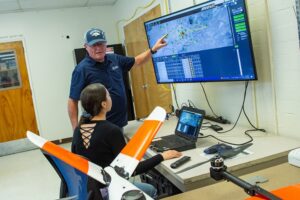 The Federal Aviation Administration (FAA) has granted the Nevada Unmanned Aircraft System (UAS) Test Site (UASTS) a waiver (Waiver No. 44803-7) issued under the authority of Title 49 of the United States Code (49 U.S.C.) 44803(c) for civil (non-public) UAS operations at a 1,000 square mile test site area located north of Reno, Nevada. “This […]
The Federal Aviation Administration (FAA) has granted the Nevada Unmanned Aircraft System (UAS) Test Site (UASTS) a waiver (Waiver No. 44803-7) issued under the authority of Title 49 of the United States Code (49 U.S.C.) 44803(c) for civil (non-public) UAS operations at a 1,000 square mile test site area located north of Reno, Nevada. “This […]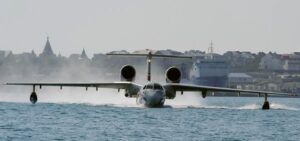 Swarms of Ukrainian long-range attack drones targeted three Russian air bases.The drone strikes on Yeysk, Kursk and Engels-2 air bases—respectively 100, 200 and 400 miles from the front line in Ukraine—inflicted some damage, but it’s hard to say how much damage. The Ukrainian intelligence directorate told Kyiv Independent it damaged, if not destroyed, seven Russian warplanes. The Ukrainian Center for […]
Swarms of Ukrainian long-range attack drones targeted three Russian air bases.The drone strikes on Yeysk, Kursk and Engels-2 air bases—respectively 100, 200 and 400 miles from the front line in Ukraine—inflicted some damage, but it’s hard to say how much damage. The Ukrainian intelligence directorate told Kyiv Independent it damaged, if not destroyed, seven Russian warplanes. The Ukrainian Center for […]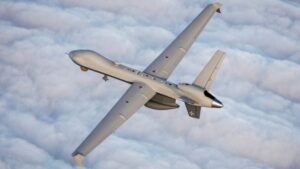 General Atomics Aeronautical Systems Inc., Poway, California, has been awarded a not-to-exceed $173,568,509 definitized contract action for capability upgrades to four MQ-9A unmanned air vehicles and two ground control stations, as well as support equipment, spares, and upgrade kits Work will be performed in Poway, California, and is expected to complete by Jan. 15, 2029. […]
General Atomics Aeronautical Systems Inc., Poway, California, has been awarded a not-to-exceed $173,568,509 definitized contract action for capability upgrades to four MQ-9A unmanned air vehicles and two ground control stations, as well as support equipment, spares, and upgrade kits Work will be performed in Poway, California, and is expected to complete by Jan. 15, 2029. […]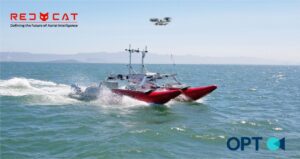 Red Cat Holdings, Inc. , a drone technology company integrating robotic hardware and software for military, government, and commercial operations, announces a partnership with Ocean Power Technologies, Inc. a supplier of innovative and cost-effective low-carbon marine power, data, and service solutions. The partnership will enable organizations using OPT’s PowerBuoy and WAM-V platforms to deploy Teal 2 […]
Red Cat Holdings, Inc. , a drone technology company integrating robotic hardware and software for military, government, and commercial operations, announces a partnership with Ocean Power Technologies, Inc. a supplier of innovative and cost-effective low-carbon marine power, data, and service solutions. The partnership will enable organizations using OPT’s PowerBuoy and WAM-V platforms to deploy Teal 2 […]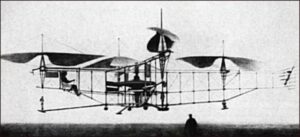 The biomechanical facilities of the dragonfly and its agility in flight were a major inspiration to Etienne Oehmichen, the French engineer who set FAI’s very first helicopter record one hundred years ago, on 14 April 1924. On this date, his Oehmichen 2 quadrocopter rose vertically into the air above Courcelles-lès-Montbéliard, France, and made a journey […]
The biomechanical facilities of the dragonfly and its agility in flight were a major inspiration to Etienne Oehmichen, the French engineer who set FAI’s very first helicopter record one hundred years ago, on 14 April 1924. On this date, his Oehmichen 2 quadrocopter rose vertically into the air above Courcelles-lès-Montbéliard, France, and made a journey […]view from above of the ruins of the basilica at Akrotiri Cyprus
The post Kourion basilica ruins appeared first on DRONESTAG.
Trozena Bridge is one of the most unique bridges in Cyprus, due to its construction as well as its location.
It was constructed during the British colonization using typical British mecahnics, materials and designs (iron frame and wooden deck set upon beams). It is one of the few bridges of its kind that are still preserved – and indeed operating – and it is built on the banks of the stream where the water of the Diarizos River flows. oday, the neighboring Trozena village is deserted. However, the iron bridge was a frequently used passageway in the mid-20th century, as it connects villages that were known for their viticulture. Today, movement on the bridge is scarce, but the landscape remains beautiful.
The post The iron bridge of Trozena appeared first on DRONESTAG.
DJI released the Avata 2 in April 2024, bringing major improvements to the original Avata. Avata launched in 2022 as the Chinese drone maker’s first foray into Cinewhoop-style drone racing. But for those who already own the Avata (or are looking to score a deal on the older model as retailers clear out inventory, is it worth upgrading to the new Avata 2? In this guide to the Avata 2 vs. Avata, let’s break down the key improvements and whether it’s worth paying more for the new and improved DJI Avata 2.


To preface this guide, the Avata 2 is better on nearly every metric. It wouldn’t make sense to compare the two purely on specs like camera or battery life, because the Avata 2 would win out every time.
When comparing the DJI Avata 2 vs Avata, you really have to factor in the price every time. Sure, the Avata 2’s camera is better, but is it THAT much better?
If money is no object to you, then I’ll save you a ton of time in reading the rest of this guide. Stop now, and just buy the Avata 2. But if you’re price sensitive, let me tell you if it’s worth paying more for the Avata 2.
DJI sells the Avata 2 in two configurations, the only difference being how many batteries you get. The cheapest configuration costs $999, but here’s what you get with both configurations:
What do you actually get inside the DJI Fly More Combo? I put together an unboxing of the three-battery combo to show you what’s included. Check it out here:

When the original Avata launched, there were a few more configurations to choose from. At the time of the 2022 launch, your options included:
So while the original Avata launched at an overall higher price tag than what the new DJI Avata 2 sells for today, it’s undergone a significant price cut.
Now, the Avata Explorer Combo goes for $719, which is $280 less. As you browse through this guide, consider whether the new features are really worth the roughly 30% discount you’d get by opting for the Avata vs. Avata 2.
One big difference in these two drones is improved image quality.
Equipped with a new 1/1.3 inch image sensor, DJI Avata 2 boasts an effective pixel of 12MP. That’s larger than the original Avata’s 1/1.7-inch sensor, which translates to better light sensitivity and greater detail (particularly in low light).
Here are some key specs, compared:
| Feature | DJI Avata 2 | DJI Avata |
|---|---|---|
| Sensor Size | 1/1.3-inch CMOS | 1/1.7-inch CMOS |
| Internal Storage | 46 GB | 20 GB |
| FOV | 155 degrees | 155 degrees |
| Aperture | 46GB | 20GB |
| Max Video Bitrate | 130 Mbps | 150 Mbps |
| Maximum Video Resolution | 4K (4∶3): 3840×2880@30/50/60fps 4K (16∶9): 3840×2160@30/50/60fps 2.7K (4∶3): 2688×2016@30/50/60fps 2.7K (16∶9): 2688×1512@30/50/120fps 1080p (4∶3): 1440×1080@30/50/120fps 1080p (16∶9): 1920×1080@30/50/120fps |
With DJI FPV Goggles V2 : 4K@50/60fps 2.7k@50/60/100/120fps 1080P@50/60/100/120fps With Vision (New Goggles) 4K@50/60fps 2.7k@50/60/100fps 1080P@50/60/100fps |
Note the high resolution on both versions, which means clear footage even if you end up cropping in post-production.
Something both drones have in common — but that you won’t find in most camera drones — is a uniquely wide lens The DJI Avata and Avata 2 camera lenses offer a maximum FOV of 155°. Compare those against something like the DJI Mini 4 Pro which films video with a 75° field of view (only expanding to 100° with a wide-angle lens attachment). What that means in practice is basically a bigger feeling like you’re in the zone in this big-screen, intense style view.
Another component of the DJI Avata 2 to love that you won’t find executed as well in the original Avata: way more internal storage. In fact, over twice the amount seen in the original Avata. You might not even need a separate microSD to film with this. 46GB is huge — enough to store up to about 90 minutes of video shot at 1080p/60fps.
Compared to the standard three-axis gimbals found in most drones, both the Avata and Avata 2 use a single-axis gimbal.
The Avata 2 benefits from DJI’s latest stabilization technologies, RockSteady and HorizonSteady, ensuring sharp and stable videos even during high-speed maneuvers or windy conditions.
Both RockSteady and HorizonSteady rely on DJI’s Electronic Image Stabilization algorithm — version 3.5 — to be specific. Just note that you can’t enable both stabilization modes simultaneously, and they must be used with DJI RC Motion 3 or RC Motion 2 with a 16:9 video recording specification. Additionally, frame rates must be ≤ 60fps.
Flying the two drones does feel quite different — and for some clear reasons.
The Avata 2 pairs with the new DJI RC Motion 3 controller, which features “One-Push” buttons that make your drone do flips, rolls, and drifts. Given that pilots are no longer limited to M-mode FPV Remote Controller users, this makes capturing dynamic FPV footage easier than ever, especially for beginner pilots.
| Feature | DJI Avata 2 | DJI Avata |
|---|---|---|
| Acrobatic Maneuvers | One-Push Flips, Rolls & Drifts (RC Motion 3 Controller) | Manual control required |
With the Avata 2 come the DJI Goggles 3, which also happen to be compatible with the DJI Air 3 and DJI Mini 4 Pro. The DJI Goggles 3 offer a huge upgrade from the original DJI Goggles — but by many metrics they’re even better than the DJI Goggles Integra that DJI put out last year.

The most noticeable differences on the new DJI Goggles 3? Adjustable diopters, a 10-bit enhanced display with a 100Hz refresh rate, and binocular cameras for improved situational awareness without removing the goggles. You can even share the live feed from the goggles with others using the DJI Fly App.
So what’s actually new and improved in the body of the Avata 2? You’ll notice a few things, including a slightly extended wheelbase, which DJI says makes it more power efficient.
It’s also generally quieter when in the air than the Avata. That said, it’s still somewhat loud. I was flying in my patio and my neighbor came out after hearing the noise, so temper your expectations that it’s totally silent.
And it’s ever so slightly smaller in terms of weight, coming in at 30 grams less than the original Avata. Though, note that the length and width dimensions actually have slightly increased (the rotor diameter remains at 3 inches).
For racing folks, it also gets a bit faster, capable of flying at 9 m/s while in Sport mode.
| Feature | DJI Avata 2 | DJI Avata |
|---|---|---|
| Takeoff Weight | 377 grams | 405 grams |
| Dimensions | 185×212×64 mm | 180x180x80mm |
| Max Ascent Speed | 6 m/s (Normal mode) 9 m/s (Sport mode) |
6 m/s (Normal mode) 6 m/s (Sport mode) |
The Avata 2 comes with an updated propeller guard for better protection in tight spaces. It also features a new “Turtle Mode” that flips the drone upright if it lands on its back. Plus, an improved low-altitude flight mode means increased safety indoors.
| Feature | DJI Avata 2 | DJI Avata |
|---|---|---|
| Propeller Guard | Updated for better protection | Basic propeller guard |
| Turtle Mode | Flips drone upright if landed on back | N/A |
| Low-Altitude Flight Mode | Improved safety features | Basic low-altitude flight mode |
Not only does Avata 2 offer nearly 30% more battery life (23 minutes over the Avata’s 18 minutes), but the charging system is more powerful, too.
| Feature | DJI Avata 2 | DJI Avata |
|---|---|---|
| Maximum Flight Time | 23 minutes | 18 minutes |
| Battery Charging | Standard charging or Two-Way Charging Hub for power transfer | Standard charging |
With a maximum flight time of 23 minutes, the device meets or exceeds the battery needs of most users looking to enjoy immersive flying with the RC Motion. As the flight time improved by 28% over the previous generation, users can experience longer immersive flights, unlocking more flying scenarios.
Of course, maximum does mean max, so flying in modes like M mode at full throttle will unsurprisingly significantly reduce that.
It takes about 88 minutes to fully charge the drone, which is done through the Type-C to Type-C PD fast charge cable (included when you purchased the combo). If you’re using the fancier charging hub in the 3-battery version of the combo, you can charge your drone fully in 45 minutes.
And here’s another neat feature of the charging hub: power accumulation. With multiple batteries sitting in the charging hub, you can simply press a button to transfer the remaining power from your collection of mostly-depleted batteries to one single battery with the highest remaining power. So, if you had one battery with 50% charge, and 2 with 25% charge, you could transfer the power from the two 25% charged batteries to create one, suddenly-fully-charged battery.

The Avata 2 is obviously more expensive than the original Avata. The base combo for the Avata 2 starts at $999, while the DJI Avata Explorer Combo goes for just $719.
If money is no object, absolutely go with the DJI Avata 2. But do you NEED to spend the extra, nearly $300? I’d still say yes. There are so many tweaks in the Avata 2 that improve upon the original. The original was neat, but had a lot of kinks to work out. The headset was annoying and uncomfortable to wear. The original Motion Controller didn’t feel as intuitive as it should have been.
Workflows post-flight were complicated. For example, the new Quick Connect&Transfer feature makes it easy to upload footage to your phone without connecting any wires. On the DJI Avata, you either had to remove your SD card or use a wire to export the footage. This cumbersome process just added one more barrier in sharing video.
Unless you’re super on a budget, it’s not worth cutting corners and choosing the cheaper model. Folks new to DJI’s FPV products should go with the Avata 2.

Now what about upgrading from the Avata to the Avata 2? This is trickier, since you already sunk the first cost. Is it worth buying yet another drone when you already have a drone that’s quite good?
There are a few situations where I’d say definitely yes. If you’re flying outdoors or need to fly for extended time, the roughly 30% increase in battery life is huge.
You also might consider the upgrade if image quality is critical. If you’re just posting on Instagram, you might not notice a difference. But if you’re trying to win a drone video contest, consider the upgrade.
Then there’s another option if you want to upgrade your kit to the Avata 2, but without actually spending $999 on a whole new kit. You can purchase the drone only — no goggles or controller — for just $489. If you already have the original Avata, controllers and goggles and you’re fine keeping your old controller and goggles, you could have the best of both worlds of sorts, as you can still use the new drone with the previous generation goggles and controller.
Sure, you won’t get the new, more comfortable (and better designed headset). You won’t get the cool Acro motions with the DJI RC Motion 3. But, you will get the rest of what Avata 2 has to offer.
So with that — if you’re an existing Avata owner who prioritizes improved image quality, smoother stabilization, effortless acrobatics, longer flight times, and a more immersive FPV experience with enhanced safety features — then the Avata 2 is a worthwhile upgrade.
The post Avata 2 vs. Avata: should you upgrade from the original model? appeared first on The Drone Girl.